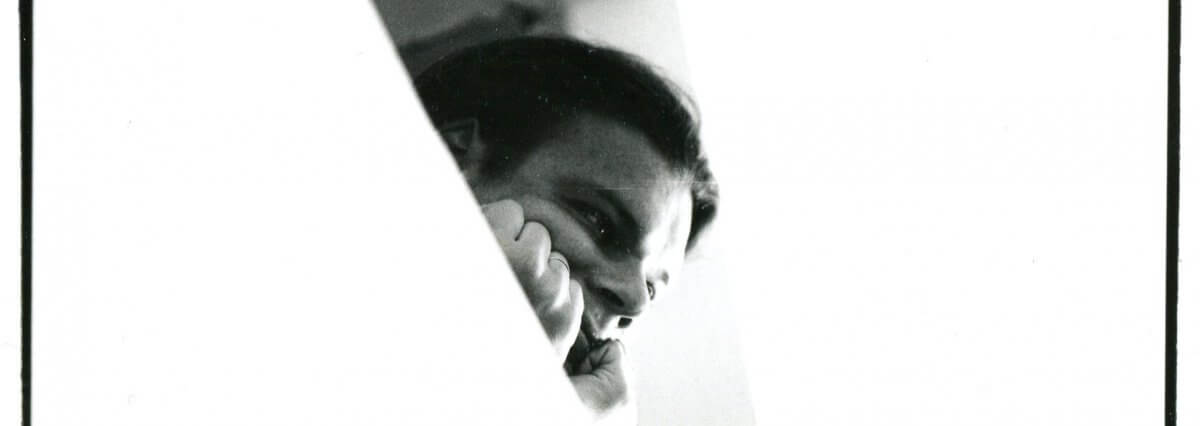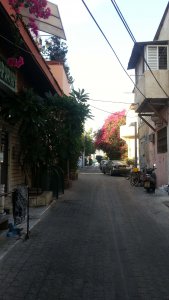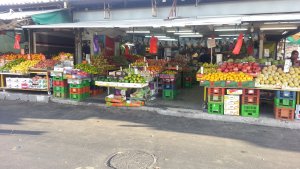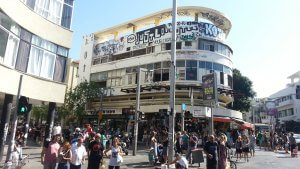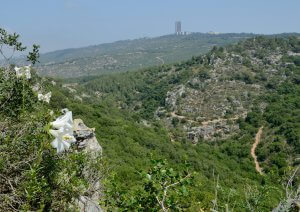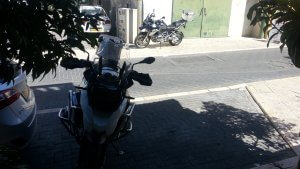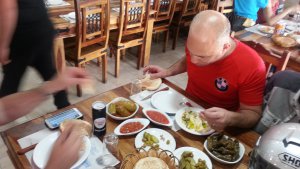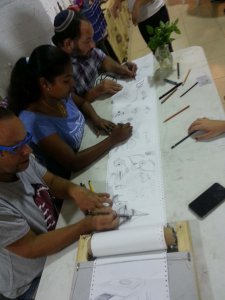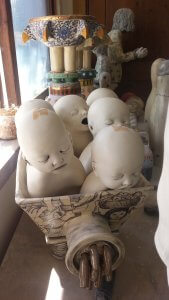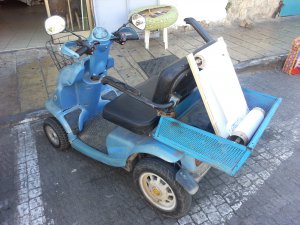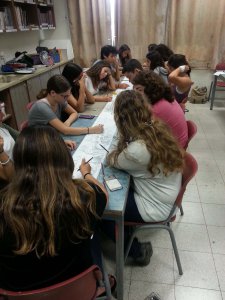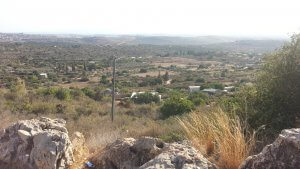Night Stroll Jerusalem 23.Sept.
Author: Drawer
Carmel area Tel Aviv
5-8.Okt.
Getting up early, going to Banana Beach for a swim,
having a coffee with some artists, going to carmel
market buying fruits and to the studio start working.
Am i exaggerating …? NO! Thats Artist live in the City!
Ps.: Visiting Galleries in between:
Ha´Kibbutz
Founded by the Kibbutz Movement Federation in the 60’s, the Kibbutz Gallery went through some changes along with the development of Israeli art scene. In the last few years the gallegy has focused its identity and its obligation to art as an inseparable part of the discourse on Israeli culture and art. Alongside its ongoing artistic activity the gallery is currently involved in a combined initiative with some 15 galleries operating in various kibbutzim in the kibbutz movement.
(Text: artbeat)
Meeting with Fatma Shannan at the:
Alfred Gallery,
Alfred Cooperative Institute for Art & Culture is an alternative art space – home to an active and vibrant artist community aimed at introducing contemporary Israeli art and its young creators to art lovers in the local community. The Alfred Institute is the successor of Alfred Gallery, a pioneer in the sphere of cooperative artistic ventures, who’s work became a model for numerous cooperative art galleries in Israel. After 8 years of successful work in south Tel-Aviv, Alfred Institute was establish one year ago, as a space devoted entirely to promoting and supporting young Israeli art.
(Text: Alfred Cooperative Institute)
4.Okt.
Motorbike Trip to Mount Carmel National Park
By invitation of the BMW – Club Israel i made a ride to the North
visiting the park and the Al-Muhraqa at Mount Carmel
“Mount Carmel National Park (Hebrew: פארק הכרמל, Park HaKarmel) is Israel’s largest national park, extending over most of the Carmel mountain range, and containing over 10,000 hectares of pine, eucalyptus, and cypress forest. The park has numerous bicycle and walking paths, dedicated nature reserves, and over 250 archaeological sites inhabited by prehistoric humans.
The park is one of the largest open spaces of northern Israel. It is a typical example of a Mediterranean ecosystem, and includes a rich inventory of geological phenomena, prehistoric artifacts, biodiversity and landscapes. In 1996 it was recognized by UNESCO as a biosphere reserve.”
(Wikipedia)
Al Muhraqa
Text by the Discalced Carmelite Order Muhraqa Monastery
“Al Muhraqa is famous as the site of the Sacrifice of Elijah the Prophet.
It is situated at the N.E. angle of the Mt. Carmel range overlooking the plain of Esdraelon, at an altitude of 482 m. A newly opened road allows the visitor to cover the distance from Haifa to Muhraqa (about 27 kms.) in three-quarters of an hour.
The Episode is dramatically recounted in the Bible (I Kgs. 18). It takes place in the days of the wicked queen Jezebel, daughter of the king of Tyre, who sought to introduce Baal-worship into the northern kingdom, after her marriage to Ahab, king of Israel.
Elijah rose up to resist the persecution. He persuaded Ahab to assemble both people and prophets of Baal on Mount Carmel (I Kgs. 18, 21) where he challenged them to a contest.
After their failure to invoke fire from heaven on the altar and his own success, the false prophets are seized and led down to the river Kishon (I Kgs. 18, 40).
From this detail we learn that the sacrifice took place near the Kishon. From Muhraqa to Haifa, the steepness of the mountain-side excludes the possibility of the event having taken place along the lower reaches of the Kishon.
The Jewish tradition is strongly in favour of Muhraqa. Rabbi Benjamin of Tudela (about 1165) mentions the site of Elijah’s altar on Mount Carmel. Rabbi Jacob of Paris made a visit to the site. They report the existence there of an ancient monument of twelve stones representing the altar of Elijah. Many Christians, including Carmelite travellers from the 17th century onwards, verify the fact. The twelve stones disappeared later, between 1830 and 1850.
The site of the present chapel was formerly occupied by an oratory built of large cut-stones. Rabbi Jacob of Paris (1228) reports that Muslims used to visit the oratory and light candles in honour of Elijah. The building probably dated from pre-Crusader times. If fell into ruin and was replaced by the actual chapel (1883).
The site has been owned by the Carmelite Order for over a hundred years. Recently the chapel was modernized and an altar of twelve stones was erected in memory of the twelve stones used by Elijah to construct his altar according to the Bible (I Kgs, 18, 31).
On the slope leading down to the main road is to be found Bir el-Muhra-qah, which may have furnished the water for the Sacrifice.
Chirbet-ed-Dawabe is close to Muhraqa (near the parking-place): ruins from the Byzantine period have been found on the surface.
Sumaka, farther off, is the site of an extensive Jewish town also from Byzantine times. It is possible that Jews colonized the place because of its proximity to the site of Elijah’s Sacrifice.”
Rest in a drusian restaurant.
Happy New Year
שנה טובה
From Tel Aviv Rolf_Maria
“Rosh Hashanah (Hebrew: רֹאשׁ הַשָּׁנָה, literally “head [of] the year”) is the Jewish New Year. The biblical name for this holiday is Yom Teruah (Hebrew: יוֹם תְּרוּעָה), literally “day [of] shouting/blasting”, sometimes translated as the Feast of Trumpets. It is the first of the Jewish High Holy Days (Hebrew: יָמִים נוֹרָאִים Yamim Nora’im, lit. “Days [of] Awe”) specified by Leviticus 23:23–32, which usually occur in the early autumn of the Northern Hemisphere.
Rosh Hashanah is a two-day celebration, which begins on the first day of Tishrei. Tishrei is the first month of the Jewish civil year, but the seventh month of the ecclesiastical year.
According to Judaism, the fact that Rosh Hashanah is the beginning of the year is explained by it being the traditional anniversary of the creation of Adam and Eve, the first man and woman according to the Hebrew Bible, and their first actions toward the believed realization of humanity’s role in God’s world. According to one secular opinion its origin is in the beginning of the economic year in the ancient Near East, marking the start of the agricultural cycle.
Rosh Hashanah customs include sounding the shofar (a hollowed-out ram’s horn), as prescribed in the Torah, following the prescription of the Hebrew Bible to “raise a noise” on Yom Teruah; and among its rabbinical customs, is the eating of symbolic foods such as apples dipped in honey to evoke a “sweet new year”.”
(Wikipedia.org)
30.Sept.
Drawing Session with Efrat Lipkin in her
Bunker Studio in Montefiore, Tel Aviv.
“Sir Moses Haim Montefiore, 1st Baronet, FRS (24 October 1784 – 28 July 1885) was a British financier and banker, activist, philanthropist and Sheriff of London. Born to an Italian Jewish family, he donated large sums of money to promote industry, business, economic development, education and health among the Jewish community in the Levant, including the founding of Mishkenot Sha’ananim in 1860, the first settlement of the New Yishuv. As President of the Board of Deputies of British Jews, his correspondence with the British consul in Damascus Charles Henry Churchill in 1841–42 is seen as pivotal to the development of Proto-Zionism.”
(Wikipedia)
The Bunker is still active.
So in case of an alarm she has to move her stuff soon
and host the people. It´s Israel, so it happens!
Efrats work goes deeply into the idea of machines in its aristotelian
idea. I am looking forward to see her newest work at the end of Oktober
in a group exhibition in TV (i will publish the dates).
We direcly stepped into drawing and made some intense drawings.
Have to redo this.
Later i signed for my “Oktober – Appartment” in the Carmel Market area in Tel Aviv.
28.Sept
Because of a hack attack on my server.. i am a bit in a delay
writing the diary. But there are masses of fotos on facebook. 😉
Acco
A drawing Session with people from the”Shop of Meaning”
Later i had a meeting with Rachel Zemer, Director of the “Okashi Art Museum” in Acco. She showed me the inspiring rooms of the museum and the actual exhibition “Alice in Wonderland”.
27.Sept.
— Acco
— Neve Ziv
Had a Drawing Session with Dori Schechtel Zanger.
I love her Drawings on the puppets and her installations.
Neve Ziv (Hebrew: נְוֵה זִיו, lit. Brightness Home), also known as Ziv HaGalil (Hebrew: זִיו הַגָּלִיל, lit. Brightness of the Galilee) is a communal settlement in northern Israel. Located east of Nahariya, it falls under the jurisdiction of Ma’ale Yosef Regional Council. In 2014 it had a population of 786. (Wikipedia)
— Acco
26.Sept.
Clil
Had a selfmade humus from Ygal for breakfast, filled up my water and he gave my a bag of homegrown apples for my way to Acco.
Wasn´t easy to leave!!
Acco
I strongly recommend to read more about the history and the
present of this city. Just some sentences from Wikipedia:
“Acre (/ˈɑːkər/ or /ˈeɪkər/, Hebrew: עַכּוֹ, ʻAkko, most commonly spelled as Akko; Arabic: عكّا, ʻAkkā)[2] is a city in the northern coastal plain region of the Northern District, Israel at the northern extremity of Haifa Bay. The city occupies an important location, as it sits on the coast of the Mediterranean Sea, traditionally linking the waterways and commercial activity with the Levant.[3] The important land routes meeting here are the north-south one following the coast and the road cutting inland through the Plain of Esdraelon; Acre also benefits from one of the very rare natural harbours on the coast of the Land of Israel. This location helped it become one of the oldest cities in the world, continuously inhabited since the Middle Bronze Age some 4000 years ago.
Acre is the holiest city of the Bahá’í Faith, and as such gets many Baha’i pilgrims. In 2014 the population was 47,464. Acre is a mixed city, that includes Jews, Muslims, Christians and Baha’is. The mayor is Shimon Lankri, who was reelected in 2011.”
I was invided by Eytan George Hurwitz. He made my stay in Acco to one of the most intense experiments that ever happend to me. I will not even try to discribe him. Go to Acco sit in a cafe or just ask for him in the streets. Everybody knows him and he deserves it.
Another restaurant Tip: The “Mercato” in the old market. We all know this one great restaurant in the habour of Acco. This one is topping it!
At first he gave my machine on a machine idea another face. Even as cool as mine:
25.Sept.
Zichron Ja’akow Highschool
My first educational lecture. 12 grade hight school at Sunday
morning 8.15. After everybody (including me!) was awake, we had a good
time and at the end we made something like a 4 meter drawing
on the Dreawing machine together.
Zikhron Ya’akov (Hebrew: זִכְרוֹן יַעֲקֹב, lit. “Jacob’s Memorial”; often shortened to just Zikhron; Arabic: زخرون يعكوف) is a town in Israel, 35 kilometres (22 mi) south of Haifa, and part of the Haifa District. It is located at the southern end of the Carmel mountain range overlooking the Mediterranean Sea, near the coastal highway (Highway 2). It was one of the first Jewish settlements of Halutzim in the country, founded in 1882 by Baron Edmond James de Rothschild and named in honor of his father, James Mayer de Rothschild. (Wikipedia)
Clil
I was invited by Yael an artist living in Clil, her mother Tami hosted me (she is an artist too and runs a cafe in clil). Yael introduced me to Ygal a painter with german roots. So we started drawing
and had long and intense talkings about Israel and Germany, roots and history of family and living inside nature.
Always with a view to the bay of haifa.
Just about 10 km from the border to the Libanon nobody would expect a place of peace,freedom and respect like this.
Text from Clil Guesthouse:
“Clil looks like no other village in Israel, a widely dispersed, ecologically attuned community nestled in the foothills of the Western Galilee overlooking the Mediterranean.
It is considered to be Israel’s first ecological village. It was built in 1979 by a group of philosophers and artists who had the vision of creating an alternative village, close to nature, living according to ecological and organic ideas.
Clil is not connected to the main power grid and therefore completely powered by solar energy. Locals try to respect the nature and preserve local plants and natural forests. There is no use of pesticides or chemicals on any of the produce grown in the area. There are also no street lights in Clil and houses are spread far apart from each other, so it is the perfect place to star gaze and enjoy the night with minimal light pollution.”
